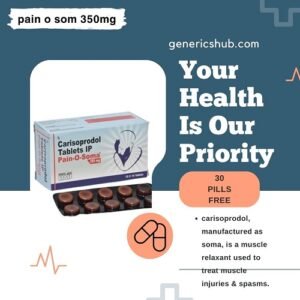Understanding the Causes of Muscle Aches and Pains
Muscle aches and pains can be disruptive, affecting our daily routines and diminishing our quality of life.

Unraveling the Mysteries Behind Muscle Discomfort
Muscle pain and pains can be disruptive, affecting our daily routines and diminishing our quality of life. Understanding the root causes behind these discomforts is crucial for effective management and relief. In this comprehensive guide, we delve deep into the intricate mechanisms that lead to muscle aches and pains, empowering you with valuable insights to alleviate and prevent these troublesome sensations.
Overexertion and Strain: The Culprits Behind Muscle Fatigue
One of the most common reasons for muscle discomfort is overexertion and strain. When we push our bodies beyond their limits, whether through intense physical activity, lifting heavy objects, or prolonged periods of sitting or standing, our muscles become fatigued. This fatigue leads to microscopic damage to the muscle fibers, resulting in soreness, stiffness, and discomfort.
Dehydration: A Silent Contributor to Muscle Cramps
Dehydration is often underestimated as a potential cause of muscle aches and pains. When our bodies lack sufficient hydration, electrolyte imbalances occur, leading to muscle cramps and spasms. These involuntary contractions can be incredibly painful and are commonly experienced during exercise or in hot weather conditions.
Poor Posture: The Hidden Trigger of Musculoskeletal Issues
In today’s sedentary lifestyle, poor posture has emerged as a significant contributor to musculoskeletal problems. Sitting hunched over desks or slouching while standing places undue stress on the muscles and joints, leading to chronic discomfort and stiffness. By maintaining proper posture and incorporating ergonomic practices into our daily activities, we can mitigate the risk of developing muscle aches and pains.
Inflammation: The Body’s Response to Injury and Illness
Inflammation plays a pivotal role in the body’s healing process, but when it becomes chronic or excessive, it can contribute to muscle pain and discomfort. Conditions such as arthritis, tendonitis, and fibromyalgia are characterized by persistent inflammation, leading to stiffness, swelling, and tenderness in the affected muscles and joints.
Stress and Tension: Unraveling the Mind-Body Connection
The mind-body connection is undeniable when it comes to muscle health. Stress and tension not only affect our mental well-being but also manifest physically in the form of muscle tightness and soreness. Techniques such as meditation, deep breathing exercises, and progressive muscle relaxation can help alleviate stress and promote relaxation, thereby reducing the likelihood of experiencing muscle aches and pains.
Nutritional Deficiencies: Fueling Muscles for Optimal Performance
Proper nutrition is essential for maintaining muscle health and function. Deficiencies in key nutrients such as magnesium, potassium, and vitamin D can impair muscle contraction and recovery, leading to increased susceptibility to aches and pains. muscle paina balanced diet rich in fruits, vegetables, lean proteins, and whole grains is crucial for supporting muscle health and minimizing discomfort.
Age-Related Changes: Navigating the Effects of Aging on Muscle Health
As we age, our muscles undergo natural changes that can predispose us to increased discomfort and stiffness. Sarcopenia, the gradual loss of muscle mass and strength, is a common age-related phenomenon that can contribute to muscle aches and pains. Engaging in regular exercise, particularly resistance training, can help counteract the effects of sarcopenia and promote optimal muscle function.

Medical Conditions: Identifying Underlying Factors
In some cases, muscle aches and pains may be symptomatic of underlying medical conditions muscle pain require professional evaluation and treatment. Conditions such as fibromyalgia, chronic fatigue syndrome, and autoimmune disorders can manifest with widespread muscle discomfort as a primary symptom. Seeking medical guidance is essential for accurate diagnosis and personalized management strategies.
Treatment Options
1. Rest and Recovery
One of the simplest yet most effective ways to alleviate muscle aches and pains is through adequate rest and recovery. Allow your body sufficient time to recuperate, especially after intense physical activity or injury. Incorporate rest days into your exercise regimen to prevent overexertion and promote muscle repair.
2. Hot and Cold Therapy
Alternating between hot and cold therapy can provide significant relief from muscle discomfort. muscle pain Apply a heating pad or warm compress to relax tense muscles and improve blood circulation. Conversely, cold packs can help reduce inflammation and numb pain in injured or sore muscles.
3. Massage Therapy
Massage therapy offers both relaxation and therapeutic benefits for muscle aches and pains. Professional masseuses utilize various techniques such as Swedish massage, deep tissue massage, and trigger point therapy to alleviate tension, improve flexibility, and promote healing.
4. Over-the-Counter Medications
Over-the-counter (OTC) medications such as ibuprofen, acetaminophen, and naproxen sodium can help alleviate mild to moderate muscle pain. These medications work by reducing inflammation, blocking pain signals, and providing temporary relief from discomfort. However, it’s essential to follow dosage instructions and consult with a healthcare professional if you have underlying health conditions or are taking other medications.
5. Physical Therapy
For persistent or severe muscle aches and pains, physical therapy may be recommended. Licensed physical therapists design customized exercise programs to improve strength, flexibility, and mobility while addressing underlying issues contributing to muscle discomfort. Techniques such as stretching, strengthening exercises, and manual therapy can help alleviate pain and prevent future injuries.
6. Alternative Therapies
Pain O Soma 500mg is main medicinal advantage is its capacity to efficiently treat musculoskeletal pain. By addressing the underlying muscle tension and spasm, this medicine offers substantial relief from a variety of diseases, including injuries, sprains, strains, and chronic illnesses.
In addition to conventional treatments, several alternative therapies offer holistic approaches to managing muscle aches and pains. These may include acupuncture, chiropractic care, yoga, tai chi, and herbal remedies. While scientific evidence supporting their efficacy varies, many individuals find relief and improved well-being through these complementary practices.
Prevention Strategies
Prevention is key to minimizing the recurrence of muscle aches and pains. Incorporate the following strategies into your lifestyle to promote musculoskeletal health:
- Proper Warm-up and Cool-down: Always warm up before exercising and cool down afterward to prepare your muscles for activity and prevent injury.
- Maintain Proper Posture: Practice good posture when sitting, standing, and lifting objects to prevent strain on muscles and joints.
- Stay Hydrated: Adequate hydration is essential for muscle function and recovery. Drink plenty of water throughout the day, especially during physical activity.
- Balanced Diet: Ensure your diet includes sufficient nutrients, vitamins, and minerals essential for muscle health and repair.
- Regular Exercise: Engage in regular physical activity to strengthen muscles, improve flexibility, and maintain overall fitness levels.
Conclusion: Empowering Yourself with Knowledge
Understanding the diverse array of factors that contribute to muscle aches and pains is key to effectively managing and preventing these discomforts. By addressing lifestyle factors such as hydration, posture, stress, and nutrition, as well as seeking appropriate medical attention when necessary, we can optimize muscle health and enhance overall well-being.




